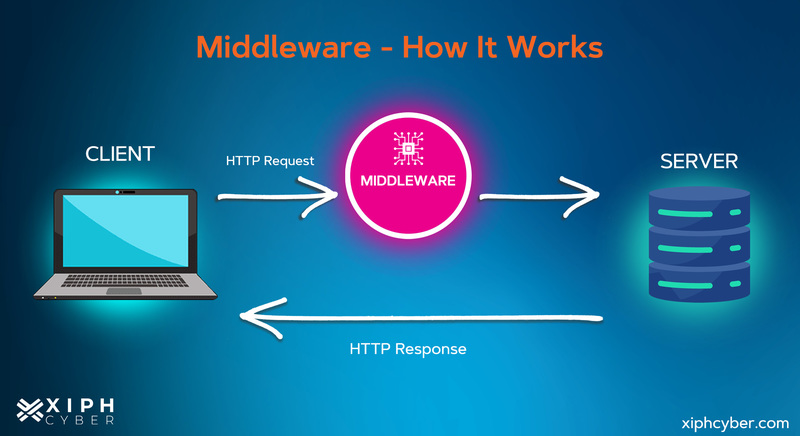Published May 24, 2023 by Xiph
Middleware is a buzzword that sounds ominous, but it’s quite the opposite. Middleware is an integral (and cost-effective) component of integration for businesses to build applications more efficiently, manage data, and service their customers.

What is middleware?
Middleware is a software component that acts as a bridge to connect different operating systems (OS), web applications, and databases, especially on a distributed network. You can think of middleware as ‘plumbing’ that connects two applications and their underlying operating systems so that data can flow between them through the ‘pipe’ to create a fully functional application. Middleware supports and simplifies complex distributed applications, including web servers, application servers, messaging, and similar tools.
How does middleware work?
Middleware essentially functions as a hidden translation layer between the front end (i.e. the client) and the back end of any application (i.e. a database, mainframe application), allowing them to seamlessly transfer data and UIs between each other.
In technical terms, the middleware component sits between the incoming HTTP request and the application’s response and performs some action on the request or response before passing it to the next component in the pipeline. In layman’s terms, it standardises the application interfaces provided by different operating systems, unifies the protocols, and shields the details of specific operations.

Types of middleware
Not all middleware is created equal. There are different types, some that focus on connectivity, others on specific components and devices, and some that feature capabilities for specific development tasks. Here are the most common middleware types available:
Database middleware: Enables direct access and interaction with databases in the back end of an application using Transport Layer Security (TSL) or another network security protocol.
API (application programming interface) middleware: Helps developers build and deploy applications more efficiently and acts as an intermediary between other applications or devices.
Message-oriented middleware (MOM): This software or hardware architecture facilitates communication and data transfer between different application components and software systems. Using several interaction patterns, MOM uses different messaging protocols to transport messages between business applications.
Remote procedure call (RPC) middleware: Allows two applications on a different computer network to communicate with each other using a common protocol. RPC middleware can request a service from a program located in another computer on a network.
Object request broker (ORB) middleware: Allows application objects or components to communicate and work cooperatively on the same distributed network. It acts as a broker between a request from one application component and the fulfillment of that request by another object or component on a distributed network.
Transaction middleware: Supports the execution of data transactions across a distributed network. The transactional middleware uses transaction processing monitors (TPMs), which monitor transactions from one stage to the next to ensure successful completion.
Asynchronous data streaming middleware: Replicates a data set in an intermediate store where it can be shared among multiple applications. A popular middleware for real-time data streaming is Apache Kafka.
Device middleware: Provides integration and connectivity capabilities for applications built on different programming languages but running on the same device.
Portal middleware: Facilitates front-end integration and interactions between various related applications to create a single composite application.
Robotic middleware: Manages complex functionalities of robot control software systems and inter-process communication.
Why do businesses need middleware?
Middleware is critical for businesses that use multiple software systems. It also allows businesses to innovate faster by providing functionality to connect enterprise and platform applications and operating systems intelligently and efficiently.
For example, middleware can customise responses from back-end applications or services to front-end application requests. If you had an e-commerce business, it could allow customers to sort product search results by their nearest store location, based on their IP address or location information.
Developers can also use middleware to build applications without having to create a custom integration every time they need to connect to application components, data sources, computing resources, or devices. It basically automates a lot of manual decisions and business processes.
Also, middleware logic can dynamically manage traffic across a distributed system by scaling to distribute client requests across multiple servers when application traffic spikes.
API vs middleware: What’s the difference?
Middleware is designed specifically to perform the integration work between isolated applications, systems, and networks. An API is a callable service that ensures functionality and provides a method to interface with the software and other applications.
A final word
Middleware is the glue that connects different software platforms, applications, and devices together. It provides web developers with a unified interface to support application development, usability, and integrations with other software platforms and systems. For more information, contact us via email: enquiries@xiphcyber.com.
Posted in: Security


